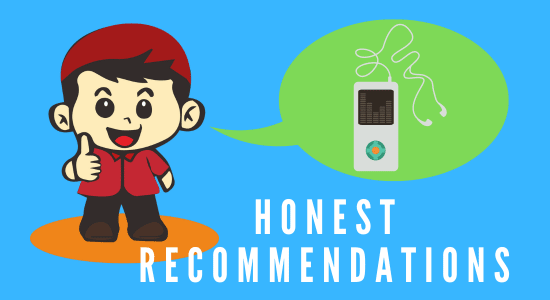Affiliate marketing is thrilling, full of ups and downs, and every twist brings a new challenge. Stumbling blocks are as common as pop-up ads. But every problem comes with a handy-dandy solution waiting to be discovered.
That's right, there ain't a problem that you can't fix because you can really do it in your mix. Here’s a compilation of 20 practical ways to fix issues for users and smoothen your affiliate marketing business.

Did You Know?
- Live Chat Preference: Over 50% of consumers prefer to use a live chat feature for online shopping inquiries.
- Response Time Expectations: 79% of consumers expect a response within 24 hours when contacting a brand online.
- Abandoned Carts Due to Lack of Information: About 70% of online shopping carts are abandoned, often due to unanswered questions about products or services.
- Importance of Customer Reviews: 93% of consumers say online reviews impact their purchasing decisions.
- Self-Service Preferences: 67% of customers prefer self-service options like FAQs over speaking to a company representative.
1. Maintain a Transparent Product Review Section
Transparency is the bedrock of trust in affiliate marketing. A well-maintained product review section can offer users insights into the products you're promoting.
Take, for example, an affiliate marketer promoting various software tools. By providing honest reviews, including both pros and cons, you assist users in making informed choices. The reviews could cover aspects like ease of use, pricing, and customer support quality, offering a rounded view of the product.
2. Quick Links to Product Support
There's nothing more frustrating for a user than encountering a problem and not knowing where to turn for help. By providing quick links to the official product support pages, you can help alleviate this issue.
For instance, if you are promoting tech gadgets, having a section with links to the manufacturer's support page can save users a lot of time and frustration when they run into challenges.
3. Post Regular Product Updates
The world of products is ever-changing with continual updates and upgrades. By regularly posting updates on the products you're promoting, you keep your users in the loop. If, for example, a new version of a smartphone you've promoted is released, a post detailing the new features and how they compare to the old version can be incredibly helpful. It's not just about informing the users but aiding them in making decisions regarding whether an upgrade is worth their while.
4. Recommend Products You Trust

Promoting products that you have a firm belief in enhances your credibility. Users tend to appreciate recommendations that come from a place of genuine trust and experience. Suppose you're an affiliate marketer in the fitness niche. By recommending a particular brand of protein supplements that you have tried and found beneficial, you create a rapport with your users.
Sharing personal experiences or testimonials can foster a level of trust and appreciation for your honest insights.
5. Stay Updated on Product Changes
Similar to posting regular product updates, staying abreast of any changes in the products you promote is vital. It enables you to provide accurate and updated information.
If a laptop you previously recommended now has a newer model with better battery life, ensuring that this information is reflected in your content helps your users make better-informed decisions. It's all about bridging the information gap, ensuring your users have the most current data at their fingertips.
6. Creating Video Reviews: A Visual Feast
People love seeing products in action before making a buying decision. As an affiliate marketer, creating video reviews can be a fantastic way to help users understand what they are about to purchase.
For instance, if you are promoting a fancy new espresso machine, a video demonstrating how to create the perfect cup of espresso can be both engaging and helpful. This visual interaction can clarify any doubts and give users a real feel of the product, providing them with the confidence they need to make a purchase.
7. Categorizing Product Recommendations
Categorizing products is like having a well-organized digital closet. For example, if you’re promoting books, categorize them by genres. If it’s clothing, categorize by occasions or seasons. This makes for a smooth browsing experience, helping users find what they are looking for with ease.
8. Highlighting User Feedback: The Voice of Experience
User feedback is the torchlight in the dark alley of purchase decisions. By sharing real feedback from users who purchased the products based on your recommendations, you help others in the decision-making process.
For instance, if you’re promoting kitchen appliances, share feedback from users on how a particular blender performed over time, the pros, and the cons.
Did You Know?
- Online Help Influences Buying Decisions: 88% of consumers research products online before making a purchase.
- Impact of Poor User Experience: 89% of consumers will shop with a competitor after a poor user experience online.
- Demand for Personalization: 80% of consumers are more likely to purchase from a brand that provides personalized experiences.
- Influence of Social Media on Purchasing: 54% of social media users use social platforms to research products.
- Mobile Shopping: 79% of smartphone users have made a purchase online using their mobile device in the last six months.
9. Interactive Product Comparison: Making Choices Easier
An interactive product comparison tool is certainly a boon for users torn between options. Suppose you’re promoting smartphones. A comparison post that allows users to compare features such as battery life, camera quality, and price can simplify the decision-making process.
This interactive endeavor not only aids in providing essential information but does so in a user-friendly, engaging manner.
10. Clear and Simple Language

The language you use is the bridge between you and potential buyers. Avoid industry jargon and opt for a friendly tone. Imagine visiting a foreign country where everyone speaks in complex phrases you can't understand. That's how users feel when they encounter jargon on an affiliate marketing site.
Clear and simple language is like a welcoming door to the vast world of online marketing. Let's consider a scenario: you're promoting a top-notch home security system.
Now, imagine describing it with technical jargon like “integrated 1080p resolution with infrared LEDs for night vision.” That sounds intimidating, right? Instead, opt for a friendly, more digestible approach: “This security camera gives you a clear view, day or night.” Now, that's inviting!
Using accessible language is not dumbing down; it's opening up. It’s about making your content approachable and easily understood, ensuring that your message gets across to every potential buyer. Take technical terms and translate them into everyday language. It doesn’t alienate anyone but invites more people to understand the products you're promoting.
Simple language fosters a more inclusive environment where everyone feels welcome, regardless of their technical know-how. And the more at ease your visitors feel, the more likely they are to trust your recommendations, which could lead to better engagement and potentially, more clicks. So, the next time you’re crafting a review or product description, picture explaining it to a good friend who’s not a tech guru. It'll keep your narrative friendly, clear, and oh-so-welcoming!
Did You Know?
- Video Content Effectiveness: 73% of consumers are more likely to purchase a product after watching a video that explains it.
- Online Customer Service Issues: 47% of customers have not been able to resolve an issue online due to lack of support.
- Return Policies Impact Sales: 92% of consumers will buy again if the product return process is easy.
- Website Navigation Issues: 94% of consumers say easy navigation is the most important website feature.
- Email Support Expectations: 62% of consumers expect an email response within one hour.
11. Updates on Affiliate Partnerships
Informing your users about the commencement or cessation of affiliate partnerships isn’t just about keeping them in the loop, it’s about building trust. For instance, if you’ve recently partnered with a much-loved organic skincare brand, sharing this news with your users can heighten their interest and confidence in your recommendations.

12. Maintaining Updated Product Lists: Freshness Over Staleness
A regularly updated product list is like fresh bread right out of the oven—warm and inviting. Let’s say you’re promoting gadgets. Ensuring that your list stays current with the latest models and removing obsolete ones demonstrates your dedication to providing value. Moreover, a “Newly Added” section could pique the interest of regular visitors, giving them a reason to keep coming back.
13. Providing Alternative Recommendations
When a product is out of stock or discontinued, offering alternative recommendations is like handing over a friendly, “No worries, I’ve got you covered!” note. If a popular fitness tracker is no longer available, suggest a few others that match up in terms of features and price range, alleviating any potential disappointment.
Always have a Plan B in your pocket. If a user encounters a problem with a product, having alternative solutions ready can save the day. For instance, if someone is struggling with a high-end coffee maker you promoted, suggest simpler or more user-friendly coffee makers as alternatives. Offering a range of solutions caters to different user preferences and reassures them that there’s a way around any hiccup.
14. Regularly Seeking User Feedback
Inviting user feedback isn’t just about collecting insights but showing that you care about user experiences. Perhaps you’ve recommended a range of hiking boots. Encouraging users to share their on-trail experiences and feedback on the boots' comfort and durability can offer valuable insights to other potential buyers.
15. Responding to User Concerns
Addressing user concerns demonstrates your commitment to ensuring a smooth user experience. If a user points out that a linked product has drastically risen in price or is no longer as described, addressing this concern by updating the information or offering alternative products shows attentiveness. Moreover, a public response to such concerns assures all users that their voices are heard and valued.
Did You Know?
- Online Security Concerns: 17% of consumers have abandoned a purchase due to concerns over payment security.
- Impact of FAQs: 60% of consumers have used an FAQ page on a website.
- Online Chatbots: 40% of consumers don’t care whether they are helped by a chatbot or a human, as long as their issue is resolved.
- Multichannel Support: 35% of consumers expect to be able to contact the same customer service representative on any channel.
- Delayed Deliveries Impact: 69% of consumers are less likely to shop with a retailer in the future if an item they purchased is not delivered within two days of the date promised.
16. User-Friendly Site Navigation
A well-organized, easy-to-navigate site is like having a friendly tour guide in a foreign land. Imagine you’re promoting diverse categories of products like electronics, home decor, and fitness gear. A clear menu, well-labeled categories, and a straightforward search bar can make the browsing experience enjoyable rather than a puzzle to solve. Additionally, a FAQ section addressing common queries can be a helpful resource for visitors.
17. Hosting Q&A Sessions

Arranging Q&A sessions can be a lively and interactive way to address user queries and share insights on the products you promote. Imagine hosting a live Q&A on your site or social media where you discuss the benefits of the newly launched organic skincare range you’re promoting. Real-time interaction not only clears doubts but also personalizes the user experience.
18. FAQs and How-To Guides: Ready Reference
Crafting a thorough FAQ section and How-To guides can be a lifesaver for users. These resources provide answers to common questions and guide users on how to use the products.
If you're promoting gardening tools, for example, How-To guides on various gardening techniques, and a FAQ section addressing common gardening challenges can be incredibly useful. This approach saves time for users and provides them with the resources they need to enjoy the products to the fullest.
19. Personalized Product Recommendations: Tailored with Love
Offering personalized product recommendations based on previous interactions or user preferences can be a great way to help users find what they are looking for. Say you have a user who previously bought a yoga mat from a link on your site; recommending other yoga-related products like blocks or straps could be both helpful and appreciated. This personal touch makes shopping more enjoyable and less of a chore.
20. Quick Response to Queries: Lightning-Fast Clarity

Prompt responses to user queries can make a huge difference in their shopping experience. If a user has a question about the specifications of a tech gadget you are promoting, a quick and clear response can help them decide whether it’s the right product for them. Having a dedicated channel for queries, be it via email or a chat feature on your website, ensures users that help is just a click away, making their shopping experience smooth and enjoyable.
21. Regularly Review Affiliate Strategies
Keeping your affiliate strategies sharp and user-centric is like regularly servicing your car; it ensures a smooth ride. Monitor user engagement metrics, feedback, and the performance of the products you promote. For instance, if a particular product isn’t resonating well with your users, it might be time to replace it with something more appealing.
22. Provide Tips on Product Usage
Offering tips on how to make the most out of a product adds an extra layer of value to your recommendations. Say you’re promoting a high-end coffee machine; sharing tips on achieving the perfect brew or maintaining the machine could be highly appreciated by caffeine aficionados visiting your site.
23. Stay Engaged on Social Media
Your social media platforms are extensions of your affiliate marketing ecosystem. Engage with users by sharing product highlights, addressing queries, and providing additional insights. If you’re promoting fitness gear, share workout routines or health tips. When a user comments or asks a question, a prompt and friendly response can make a world of difference in building a trusting relationship.
24. Creating How-To Guides: The User’s Manual
How-to guides are a fantastic way to alleviate any product-related anxieties. If you’re promoting tech gadgets, creating a step-by-step guide on setting up a smart home system can be a godsend for the less tech-savvy souls among us. These guides can come in the form of blog posts or video tutorials, breaking down complex processes into digestible, easy-to-follow steps.
25. Creating Comparison Charts: The Clarity Catalyst
Comparison charts are a straightforward way to help users make informed decisions. If you’re promoting a range of outdoor grills, a comparison chart highlighting the features, price, and user ratings of each model can simplify the decision-making process. It’s a transparent way to lay out the options, helping users choose the one that aligns with their needs and budget.
26. Interactive Chatbots: Your 24/7 Digital Concierge
If your site was a posh hotel, chatbots would be the ever-present concierge ready to assist. For an affiliate marketer promoting a variety of tech gadgets, a chatbot can instantly guide users to, say, the latest noise-cancelling headphones or the most budget-friendly tablet. Plus, when users get immediate answers, especially during odd hours, their trust and appreciation for your platform grow.
27. Creating a Community Forum: Collective Wisdom
Setting up a community forum can foster interaction among users, allowing them to share experiences, ask questions, and provide feedback on the products you promote. For example, if you're promoting fitness equipment, having a forum where users can share workout routines and advice on using the equipment can be immensely beneficial. It creates a sense of community and provides a platform for shared learning and support.



Another article about affiliate marketing? Seriously, this stuff is everywhere now, and it’s all starting to sound the same. Nothing new here…just the same old recycled advice.
We’re sorry that you feel so negatively, but thanks for your comment.